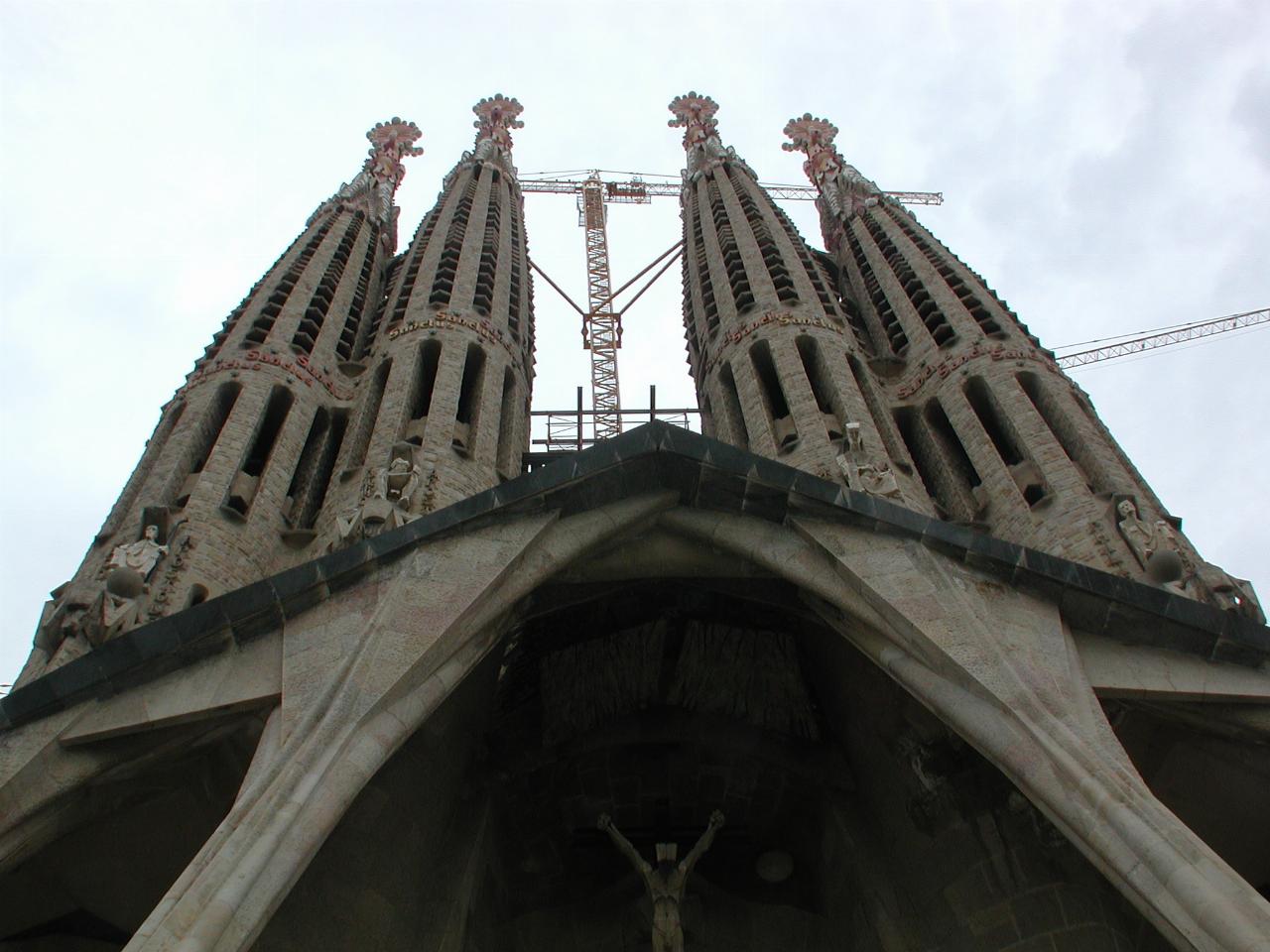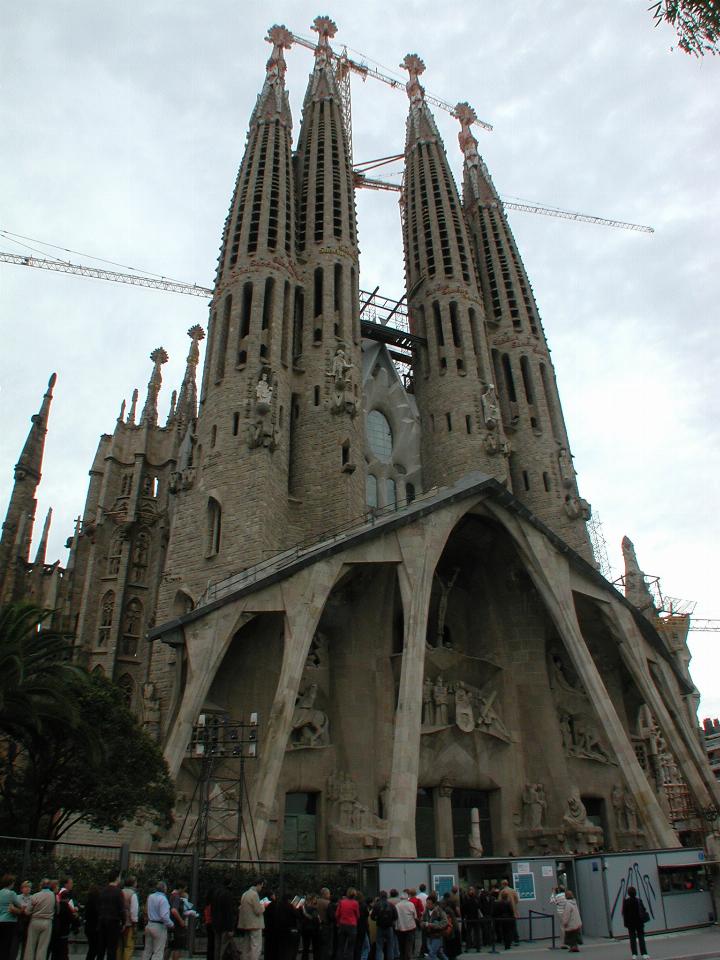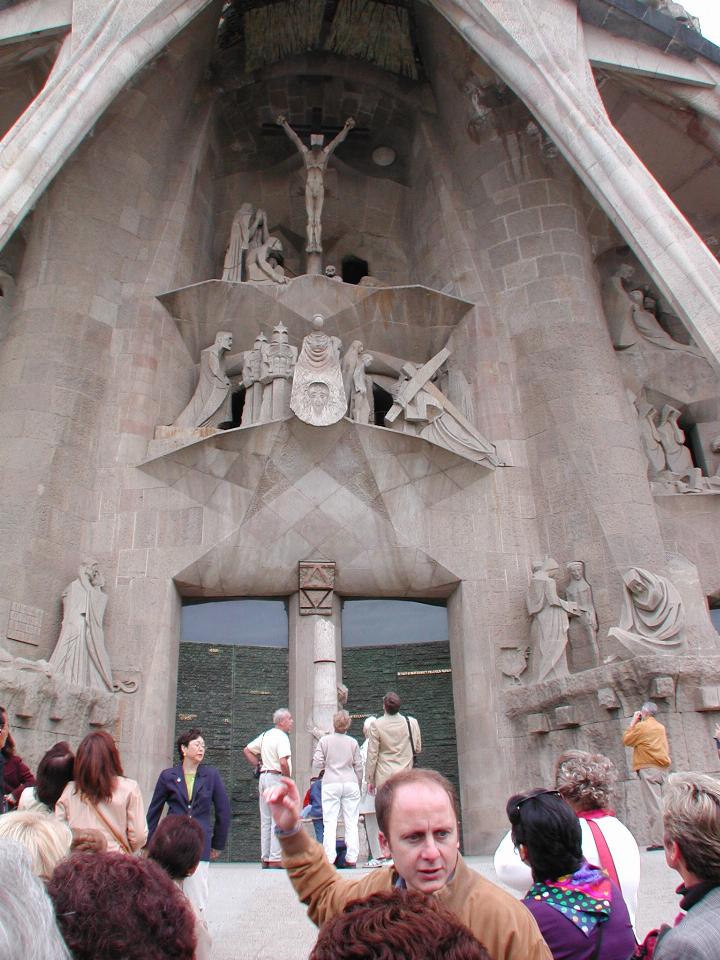
Gaudi worked on Sagrada Familia until his death in 1926 (run over by a trolley). The church features three gigantic facades: the Nativity on the east, Christ's Passion and Death on the west, and Christ's Glory on the southern facade (not yet built). The four spires on each facade symbolise the 12 apostles; the tower over the apse represents the Virgin Mary. The (not yet built) central spire is dedicated to Christ the Saviour, and is surrounded by four lesser towers, representing Matthew, Mark, Luke and John.
Notable in Gaudi's buildings is the extent to which the architect employs the shapes and textures of nature. The influence of the peaks and heights of Montserrat, Catalonia's religious retreat near Barcelona, is certainly evident in the Sagrada Familia.

The western facade, featuring Christ's Passion and Death.

Another view, showing a little more detail in the towers.

Detail of the sculpture, and our guide George.

Detail of the top of two of the towers.

Like a smiling face appearing through the foliage of the park opposite.